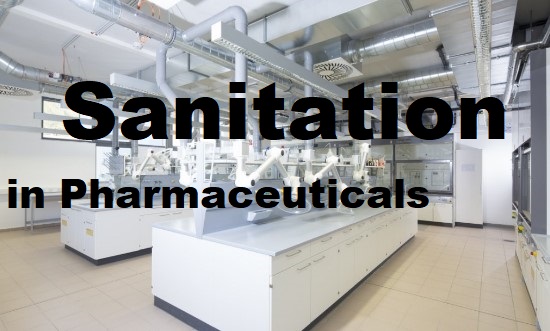
This applies to the general area, tablet production area, manufacturing area, compression/packaging area, clean area, and pharmaceutical cleaning frequency. Procedures for transferring cleaning agents and disinfectants into and out of clean areas (including procedures for disinfection of disinfectants). SOP for Sanitation in Pharmaceuticals stands for cleaning using the dryer. Cleaning the entire floor using a 2.5% disinfectant solution. (disinfectant) Coving, corner cleaning of the entire area using a wet mop. Clean the tube light fixture using a wet mop followed by a clean dry mop.
PURPOSE :
To lay down the procedure for sanitation in Pharmaceuticals.
SCOPE:
This is applicable to the general area, tablet production area, manufacturing area, compression/packaging area, clean area, & frequency of cleaning of pharmaceuticals.
RESPONSIBILITY:
- Execution: Production Pharmacist/ QA officer.
- Checking: Production Manager.
- Head of the Production Department.
REFERENCE:
In House.
MATERIAL AND EQUIPMENT:
- Antiseptics and disinfectants/cleaning agent. (Phenyl Solution, Tepol 0.1%, 70% IPA).
- Sponge mops.
- Rubber mops.
- Broom.
- Dustbins.
- Baskets and wringers.
- Vacuum cleaner.
PROCEDURE:
PRECAUTIONS:
PERSONNEL PRECAUTIONS:
- Perform the area cleaning and sanitation when there is no activity.
- Make sure that a person who is liable to clean the areas has no contiguous disease.
- Make sure that a person who is liable to clean the areas has changed properly.
- The manufacturer’s instructions must be followed and protective gears such as gloves, eye shields, aprons, safety footwear, etc. must be used while handling chemicals.
HANDLING OF ANTISEPTICS AND DISINFECTANTS:
- Handle the disinfectant carefully to avoid contact with skin and eyes. Use only validated disinfectants.
- Do not use expired disinfectants.
- Rotate the disinfectants use to avoid the development of resistance by microorganism.
- Use only dedicated buckets/ containers for preparation and filtration of different disinfectants.
- Rotate the disinfectants once in a week sequentially, with validated disinfectants and preferably process different spectrum of antimicrobial activity.
- Disinfectants and cleaning agents should not be mixed. Mixing can result in drastic reduction in antimicrobial activity.
- Disinfectants and cleaning agents should be freshly prepared. Aqueous dilutions should not be stored overnight as microorganisms can grow on storage.
- Properly store the chemicals in dry and clean place.
HANDLING OF EQUIPMENTS:
- Use separate lint free mop and fresh solution for cleaning of different area to avoid contamination of mop and solution.
- Wherever suitable use vacuum cleaner. Ensure that it is in clean and dry condition before use.
- Properly store the equipments in dry and clean place.
- Dust mops should not be used to pick up liquids.
- Discard greasy or oily rags promptly.
- Dust mop heads should be placed in plastic bags and sent to the laundry when they become very dirty or after each shift.
CLEANING/SANITIZING PRECAUTIONS:
- Prior to start of the cleaning/sanitizing procedure prepare an adequate quantity of cleaning solutions. Select an appropriate agents based on the solutions that were utilized in the preceding month.
- Allow the mops to soak in their respective buckets, in solution for approximately 5 minutes prior to the starting of cleaning.
- Cleaning must occur from the cleanest to the dirtiest areas.
- Always start at the innermost part of area, cleaning towards the exit when washing floors to avoid walking over cleaned areas.
- Ensure that every corner of the area is properly cleaned and those of the outside entrance are cleaned with wipe daily.
- Schedule should be followed as required i.e. daily cleaning, weekly cleaning, monthly cleaning/repairing, three-time cleaning and yearly cleaning/repairing.
- Where the fumigation is required properly done. Time of fumigation can be validated for better results. And area should be de-fumigated properly before use.
METHOD:
- Firstly take a bucket fill with tap water or as suggested in related SOP of cleaning for specific area.
- Use disinfectant and antiseptic as per SOP.
- Prepare the disinfectant and antiseptic solutions dilutions as given with instructions. (Add 15ml phenyl in 05 liter tap water)
- Following areas to be cleaned:
- Ceiling
- Walls
- Doors, window frames and glasses
- Switches
- Furniture
- Waste bins
- Floor
- All area must be cleaned with vacuum cleaner or broom to remove the dust and powder in floors, walls, ceilings and ventilators.
- Floor firstly cleaned with tap water as per SOP of cleaning.
- After clean by tap water use detergent solution.
- Wet cleaning is done immediately after brooming.
- Spillage of any liquid on the floor should be cleaned immediately by rubber mop and floor should be wiped dry.
- Follow the frequency of cleaning as per Annexure.
- Empty the dustbin regularly.
- At the end of the day, drain the excess solution of cleaning agents in drain line wash and dry the empty containers.
- Record every day, weekly, monthly or annually cleaning record as per SOP.

